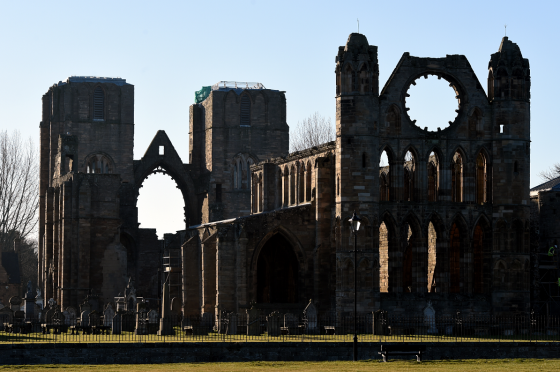The windows of Elgin Cathedral have been empty of glass since the 1600s, with visitors and locals having to rely on their imagination to picture what used to be there.
However, new scientific testing of the window panes has offered a glimpse into the designs depicted on them more than 500 years ago.
Scientists at Heriot-Watt university in Edinburgh tested thirty shards of medieval window glass from the ancient building and discovered more about its colour, origin and even Scotland’s trade routes centuries ago.
Helen Spencer, the PhD student who led the study, said: “If we can find what the windows looked like, it can tell us about what religious orders and fashions came in to Scotland, what saints were idolised, who funded the construction of churches, and where the builders, glass and glass decorators came from.
“Unlike most countries in Europe, there is no surviving medieval window glass in situ in monastic or ecclesiastical buildings in Scotland.
“This means we rely on recovered fragments to learn more about glass from this period.
“Understanding more about these sites brings them to life. The more we discover about our historic buildings the more we can appreciate our history, how people lived, the connections between Scotland and Europe at that time and the craftsmanship involved.”
It was discovered that most of the glass that formed the windows at the Lantern of the North came from the north of France.
The 13th century cathedral was the principal church of the bishops of Moray but it lost its roof shortly after the Protestant reformation of 1560, and later its central tower fell.
It is believed that the destruction of the great west window was caused by Oliver Cromwell’s soldiers sometime between 1650 and 1660.
The building became a visitor attraction in the early 1800s.
